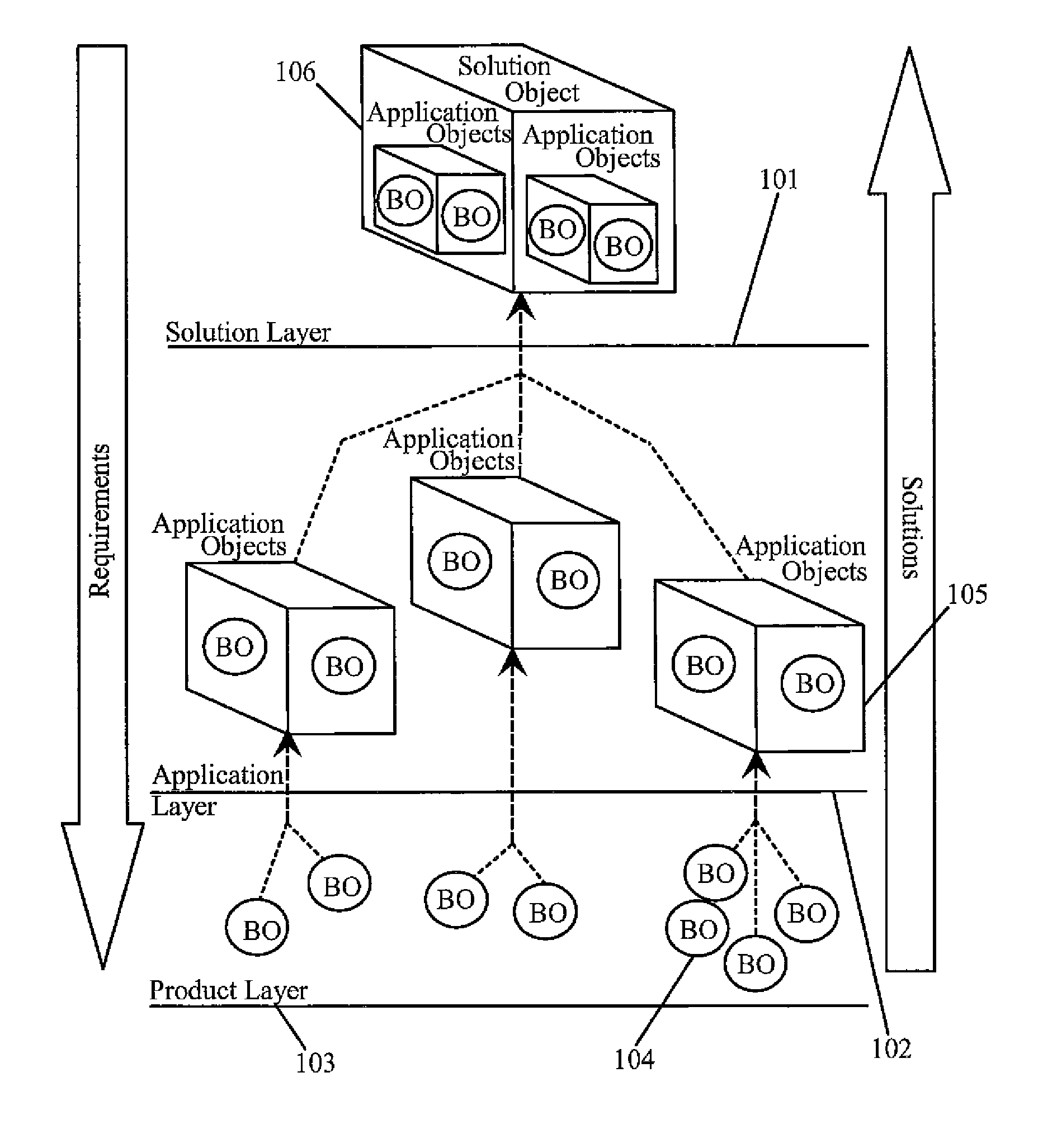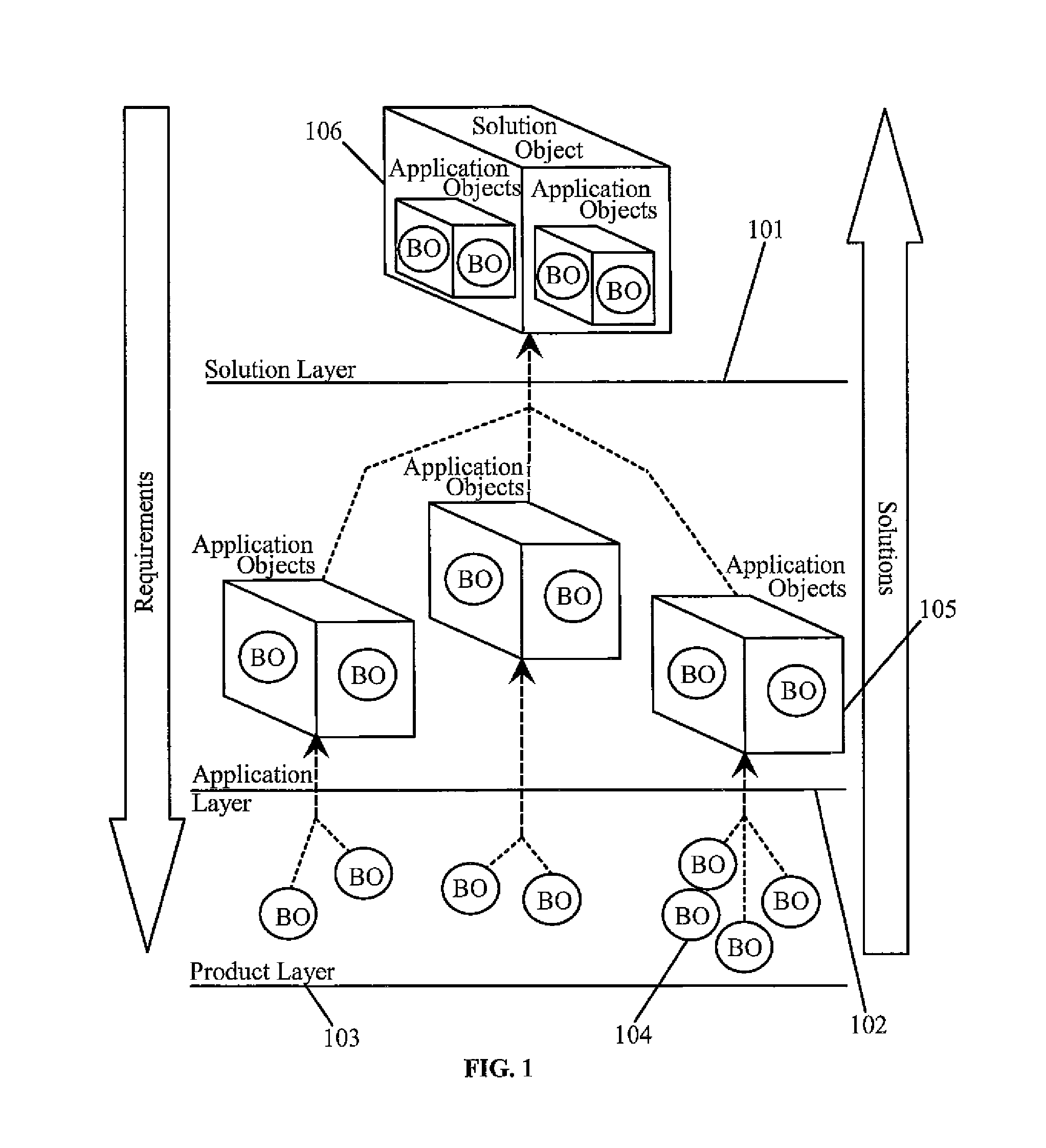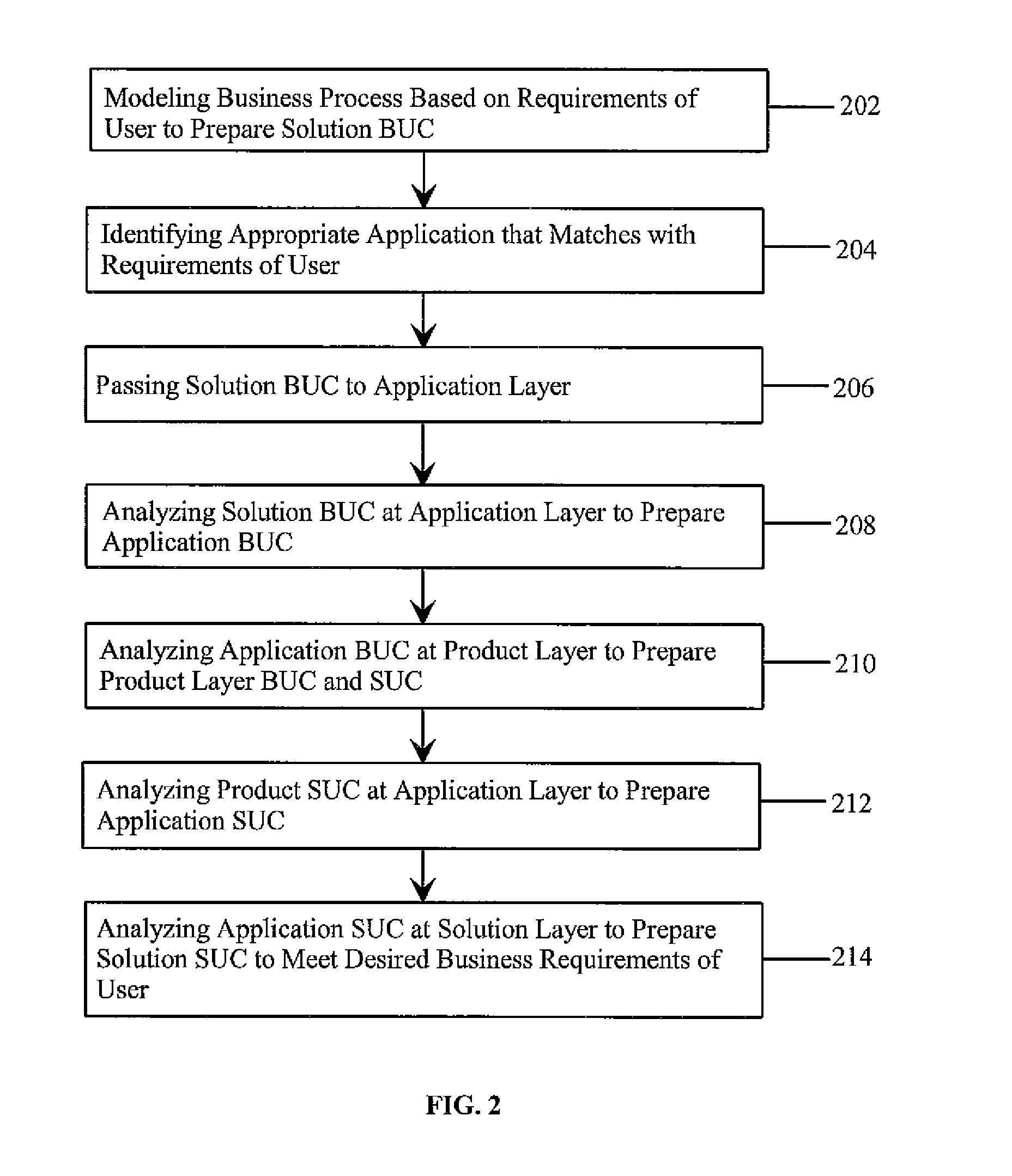Product-application-solution (PAS) model for software design and development
a technology of product application and software design, applied in the direction of source code creation/generation, program control, instruments, etc., can solve the problems of high cost activity, inefficiency and high cost, and difficulty in implementing solutions
- Summary
- Abstract
- Description
- Claims
- Application Information
AI Technical Summary
Benefits of technology
Problems solved by technology
Method used
Image
Examples
case 1
[0038] Application features are available—In this case, Solution analyst specializes the application features at the solution layer and creates Solution level BUCs, SUCs and Solution Definition Documents. These artifacts are given to Solution Architect for designing and implementing the solution.
case 2
[0039] Application features are not available, but Product features are available—In this case, Solution analyst analyses the requirements, models the business processes and prepare Business Use Cases (BUC) and then passes on the requirements and BUCs to Application analyst operating at the Application layer of the domain. Application analyst generalizes the requirement from the client for the domain. He then modifies the existing Application Requirement Definitions, BUCs and SUCs or creates new Requirement Definitions, BUCs and SUCs to incorporate the new generalized requirement. Artifacts are then passed on to the Application architect for designing and implementing the requirement in the Application. After incorporating the change in the Application, Application layer notifies the same to Solution layer and process flow in Case 1 is executed.
case 3
[0040] Application and Product features are not available—In this case, Solution analyst analyses the requirements, models the business processes and prepare Business Use Cases (BUC) and then passes on the requirements and BUCs to Application analyst operating at the Application layer of the domain. Application analyst generalizes the requirement from the client for the domain. Application Analyst then modifies the existing Application Requirements and BUCs or creates new Requirement Definitions and BUCs. Since product features are not available for this generalized requirement, the requirements and BUCs are passed on the Product analyst. Product analyst generalize the requirement at the product level. Analyst then modifies the existing Product Requirement Definitions, BUCs and SUCs or creates new Requirement Definitions, BUCs and SUCs. These artifacts are then passed on to Product Architect for designing and implementing the requirement in the Product. After incorporating the chang...
PUM
 Login to View More
Login to View More Abstract
Description
Claims
Application Information
 Login to View More
Login to View More - R&D
- Intellectual Property
- Life Sciences
- Materials
- Tech Scout
- Unparalleled Data Quality
- Higher Quality Content
- 60% Fewer Hallucinations
Browse by: Latest US Patents, China's latest patents, Technical Efficacy Thesaurus, Application Domain, Technology Topic, Popular Technical Reports.
© 2025 PatSnap. All rights reserved.Legal|Privacy policy|Modern Slavery Act Transparency Statement|Sitemap|About US| Contact US: help@patsnap.com



